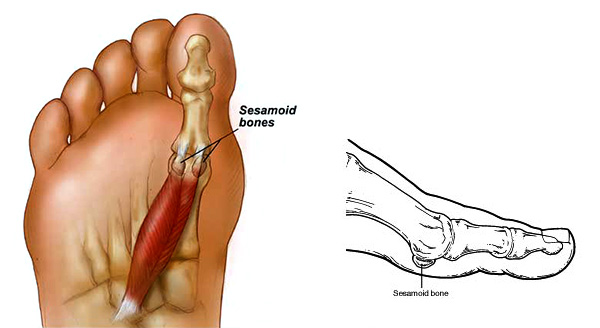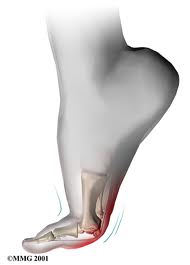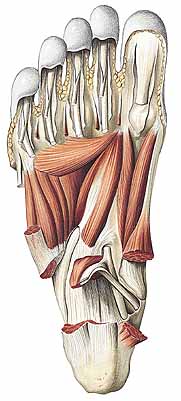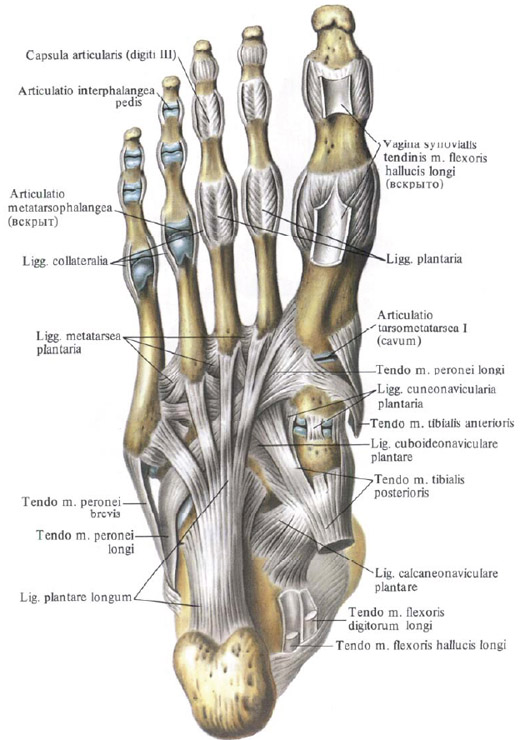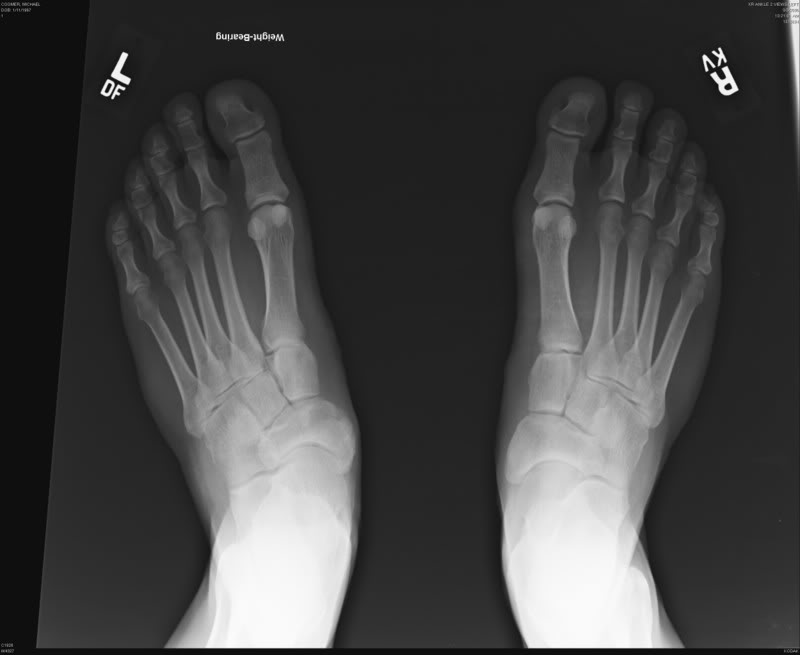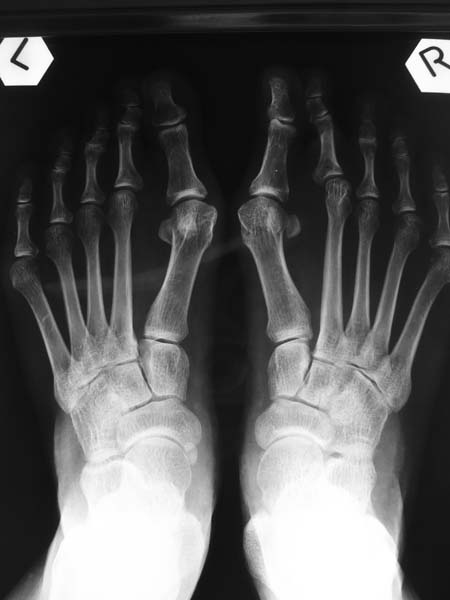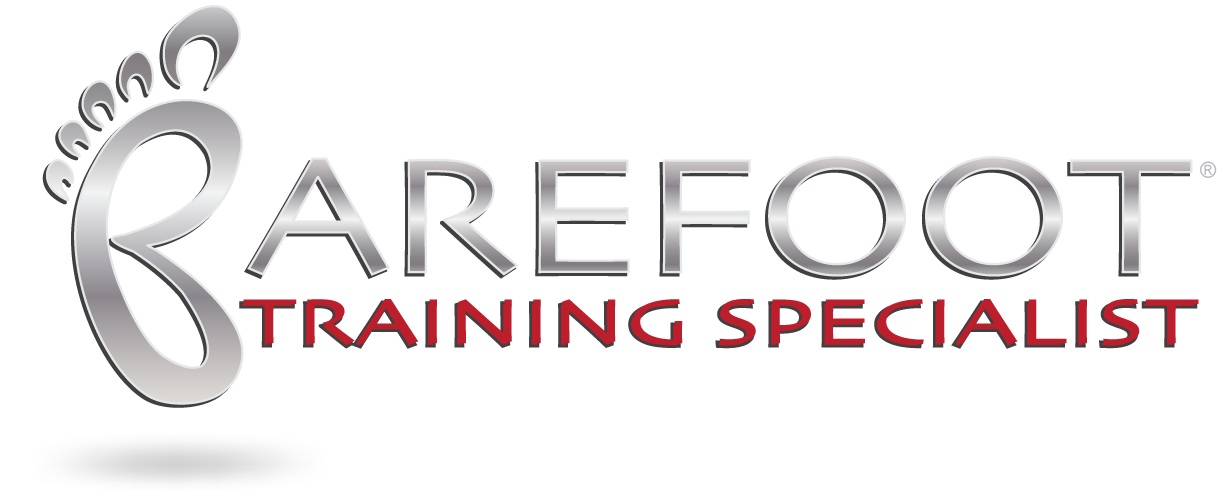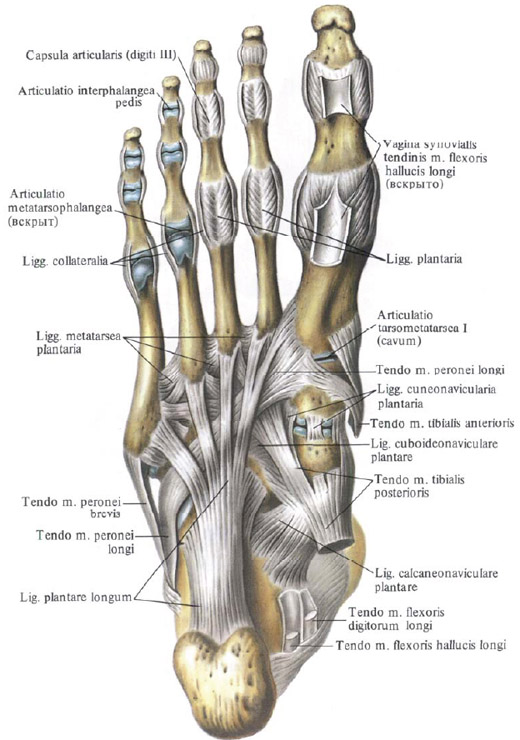
Foot Function & Fascial Lines: Sesamoids, Short Foot & Stability
Welcome to another installment of EBFA’s Blog Series: Foot Function and Fascial Lines. This series of articles explores the fascial integration between the foot and the rest of the body. We will show you that these fascial integrations are more complex that you think and expand beyond simple slings and lines.
This week’s article is dedicated to fascial integration with the sesamoid bones of the great toe joint – and how this influences our ability to engage foot intrinsics, build a strong foot foundation and stabilize the pelvis proximally during gait.
The Sesamoids
Situated directly under the head of the first metatarsal you will find two small, oval bones. These two bones are referred to as sesamoids and actually lie within the tendons of the flexor hallucis brevis (FHB) muscle.
Acting much like the patella, the sesamoids functionally create a fulcrum to provide a mechanical advantage to the FHB during the propulsive phase of gait. As we shift from Late Midstance to Terminal Stance, the FHB engages to stabilize the great toe (and 1st MPJ) against the ground allowing us to push-off in the sagittal plane.
Of course we need to take this one step further as 1st MPJ stability is not only observed in the sagittal plane but also the transverse (and frontal) plane. To stabilize the great toe in the transverse plane we have to look even closer at the tendons of the FHB.
Enter the Abductor and Adductor Hallucis
Closer examination of the FHB and the 1st MPJ demonstrates that there is an integrated relationship between the FHB and the abductor hallucis and adductor hallucis muscles – both transverse plane muscles.
Situated on the medial aspect of the FHB we find the abductor hallucis muscle (think short foot!) whose tendon actually joins that of the FHB (medial tendon) forming a conjoined tendon (or one tendon).
On the lateral side of the FHB we find the adductor hallucis muscle which is formed by both an oblique head (which originates from the peroneus longus tendon) and a transverse head. Together these two heads of the adductor hallucis join the lateral tendon of the FHB as it inserts onto the proximal phalynx.
So this means that we have a conjoined tendon between the abductor hallucis and FHB – as well as a conjoined tendon between the adductor hallucis and the FHB. This medial / lateral balance between the abductor hallucis and the adductor hallucis muscle provides the transverse plane stability of the great toe and FHB as we transition into push-off.
Are you ready to review a complex fascial integration in the foot?
1. The adductor hallucis originates on the peroneus longus tendon (which is part of the lateral line and spiral line) and joins the FHB as a conjoined tendon.
2. The FHB has myofascial insertions from the posterior tibialis muscle (which is part of the deep front line) and joins the abductor hallucis as a conjoined tendon.
3. The abductor hallucis which is engaged during short foot exercise functionally picks up the navicular stimulating the posterior tibialis (deep front line) as well as the spiral line and lateral line as the posterior tibialis also has myofascial connections to the peroneus longus.
This complex myofascially integration of the foot with the rest of the body is all is the name of LOCOMOTION!
So what do the sesamoids have to do with this?
Well there is what’s referred to as sesamoid position. Sesamoid position is the transverse plane position of the sesamoids in relation to the midline of the first metatarsal.
Centered sesamoids (see below) offer the perfect balance between the abductor hallucis and adductor hallucis, allowing proper push-off.
In the case of bunions or deviation of the great toe what starts to happen is the sesamoid position shifts. When the sesamoids shift they begin to provide a mechanical advantage to the adductor hallucis muscle in the transverse plane (which is part of the pathomechanics behind bunion formation).
As the sesamoids shift laterally they bring along the FHB tendons, as well as the abductor hallucis tendon. Eventually the abductor hallucis tendon rolls under the 1st metatarsal head, taking it out of the transverse plane and making it a sagittal plane muscle.
How does this influence short foot?
With the repositioned abductor hallucis tendon under the 1st metatarsal head it becomes difficult to engage short foot (and activate the reflexive core stability associated with short foot). Since we use short foot as a key part of barefoot strong programming there are a few tricks you will need to try to better help your client activate the abductor hallucis:
1. Rocktape the foot!
By using kinesiology tape you can assist in abduction of the hallux while stimulating the superficial proprioceptors. www.rocktape.com
2 Try the Bunion Bootie!
Bunion Bootie is one of my favorite bunion correction devices that are slim, sleek and can be used during barefoot exercises or even in shoes. This small device is more of a sock that a device. www.bunionbootie.com
3. Patience!
Remember that even though the client may not feel the engagement of the abductor hallucis be patient. The more foot intrinsic strengthening is integrated into the client programming the more the motor neuron activation will follow.
For more great tips on barefoot training, short foot and fascial integration between the foot & core please visit www.ebfafitness.com

